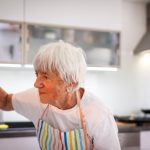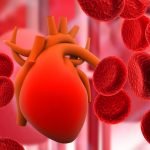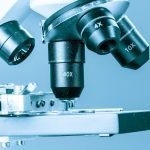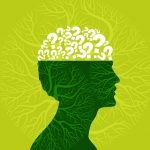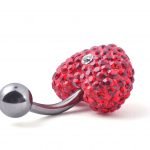From Fixing to Flourishing
Joseph Kellerstein, ND
Vanessa is a bright and energetic massage therapist, who has had a history of suppressing her anger. On initial presentation, the conversation focused on her anxiety when driving and on multiple griefs in the previous year and a half.
Vanessa reported a depression characterized by the feeling as if she was in a dark room. She had no desire to talk or to do things around the house.
She described her personality as “accommodating,” with a need to be accepted. Vanessa noted her sensitivity to criticism. Further inquiry led to a discussion about not being open with her feelings around her husband, who tended to “explode” at contradiction.
It took a few remedies and lots of questioning to ultimately come to Staphysagria. This remedy aroused a reaction that was nothing short of a “blossoming” of expression and will in this lady.
Vanessa went from accommodating to gently but firmly holding her ground whenever necessary. You had to be there.
I am not going to discuss the case in its entirety because I want to get to what happened next. (Yes, I am guilty of that awful page-turning in mystery novels.)
Vanessa had come again in early August of this year, complaining bitterly of neck pain. Radiographs of the cervical spine showed much degeneration, and her knowledge of pathology served to increase the gloom.
She said: “I’m miserable. It is hard to actually smile.” In the grip of this misery, she did not enjoy work, which she normally felt passionate about. She did not want to partake of many activities that usually brought enjoyment.
If this was not enough (and it was), there was the return of an older symptom. She continued: “I’m having palpitations—really noticeable and worrisome.” In fact, she was scheduled to wear a monitor starting the next day. With this arrhythmia came a real heat flaring in the upper dorsal lower cervical area (an area traditionally easy to heat, but this was extreme).
For 1 full day, she had experienced numbness of the left arm. There was also numbness of the face (lips especially).
Perhaps the topper to this buffet of suffering was the return of a pain under the left scapula. She described a feeling as if a “toothache,” which had been reminiscent of the first signs of a bout of breast cancer years earlier.
Being alarmed at that insight, I extracted a promise that this would be fully investigated. What struck me about the case was first the heat in the spine and its concomitance with the palpitations.
From Constantine Hering, the father of American homeopathy, we read the following:
- Between scapulae: heat, pains, burning pain.
- Hot spot on spine, burning in spots along spine.
- Feeling of intense heat running up back.
The co-occurrence of heat and palpitation is inferred by the symptom of palpitation during fever in the repertory chart. I prescribed 1 dose of Phosphorus 200, to be repeated as needed.
Three weeks later, Vanessa reported the following results after having taken the remedy: “I could feel things change within 15 minutes. I was not so miserable. The palpitations stopped soon after, and the monitor showed no arrhythmia whatever. In that first week after the Phosphorus, it felt like the staples in my lumpectomy scar were on fire, as if some kind of healing were going on. I also knew I needed to take time off work, so I took 3 weeks instead of the usual 1, and my neck calmed and mood lifted even more. One last thing. My husband was away. The alone time gave me space it seems to be myself, and this helped tremendously.”
My lesson in this besides the symptoms was the learning about discovering and respecting the needs of a patient’s vitality in hygienically healing itself. I questioned Vanessa on the differences in her body sense when stressed vs when properly rested, with the space to be herself.
We established some criteria for recognizing this need in the future. It is as much about learning what the system needs to flourish as it is about the remedy.

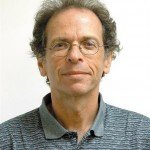 Joseph Kellerstein, DC, ND graduated as a chiropractor in 1980 and as an ND in 1984. He graduated with a specialty in homeopathy from the Canadian Academy for Homeopathy, and subsequently lectured there for two years. He also lectured in homeopathy for several years at CCNM; for eight years at the Toronto School of Homeopathic Medicine; and for two years at the British Institute for Homeopathy. Dr. Kellerstein’s mission is the exploration of natural medicine in a holistic context, especially homeopathy and facilitating the experience of healing in clients. Dr. Kellerstein is presently teaching a post-grad course in Hahnemannian prescribing with Dr. Andre Saine. Its mission is to promote excellence in the basics of homeopathic prescribing; case taking; repertory; Organon as applied to real-life practice; and case analysis skills via modeling the masters. The course runs for three years; distance learning is available. Students can preceptor in Dr. Kellerstein’s clinic, and mentoring is available.
Joseph Kellerstein, DC, ND graduated as a chiropractor in 1980 and as an ND in 1984. He graduated with a specialty in homeopathy from the Canadian Academy for Homeopathy, and subsequently lectured there for two years. He also lectured in homeopathy for several years at CCNM; for eight years at the Toronto School of Homeopathic Medicine; and for two years at the British Institute for Homeopathy. Dr. Kellerstein’s mission is the exploration of natural medicine in a holistic context, especially homeopathy and facilitating the experience of healing in clients. Dr. Kellerstein is presently teaching a post-grad course in Hahnemannian prescribing with Dr. Andre Saine. Its mission is to promote excellence in the basics of homeopathic prescribing; case taking; repertory; Organon as applied to real-life practice; and case analysis skills via modeling the masters. The course runs for three years; distance learning is available. Students can preceptor in Dr. Kellerstein’s clinic, and mentoring is available.




